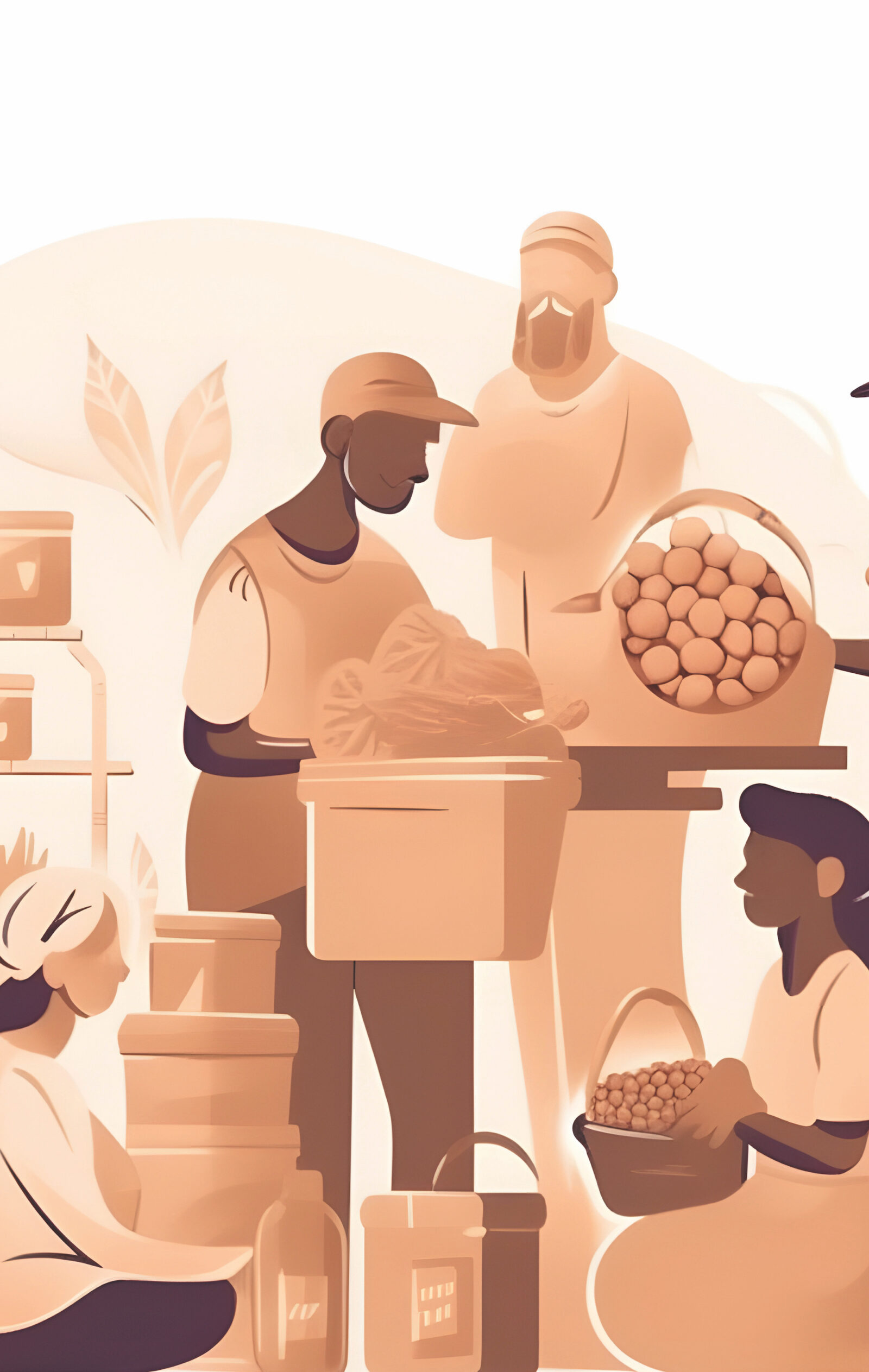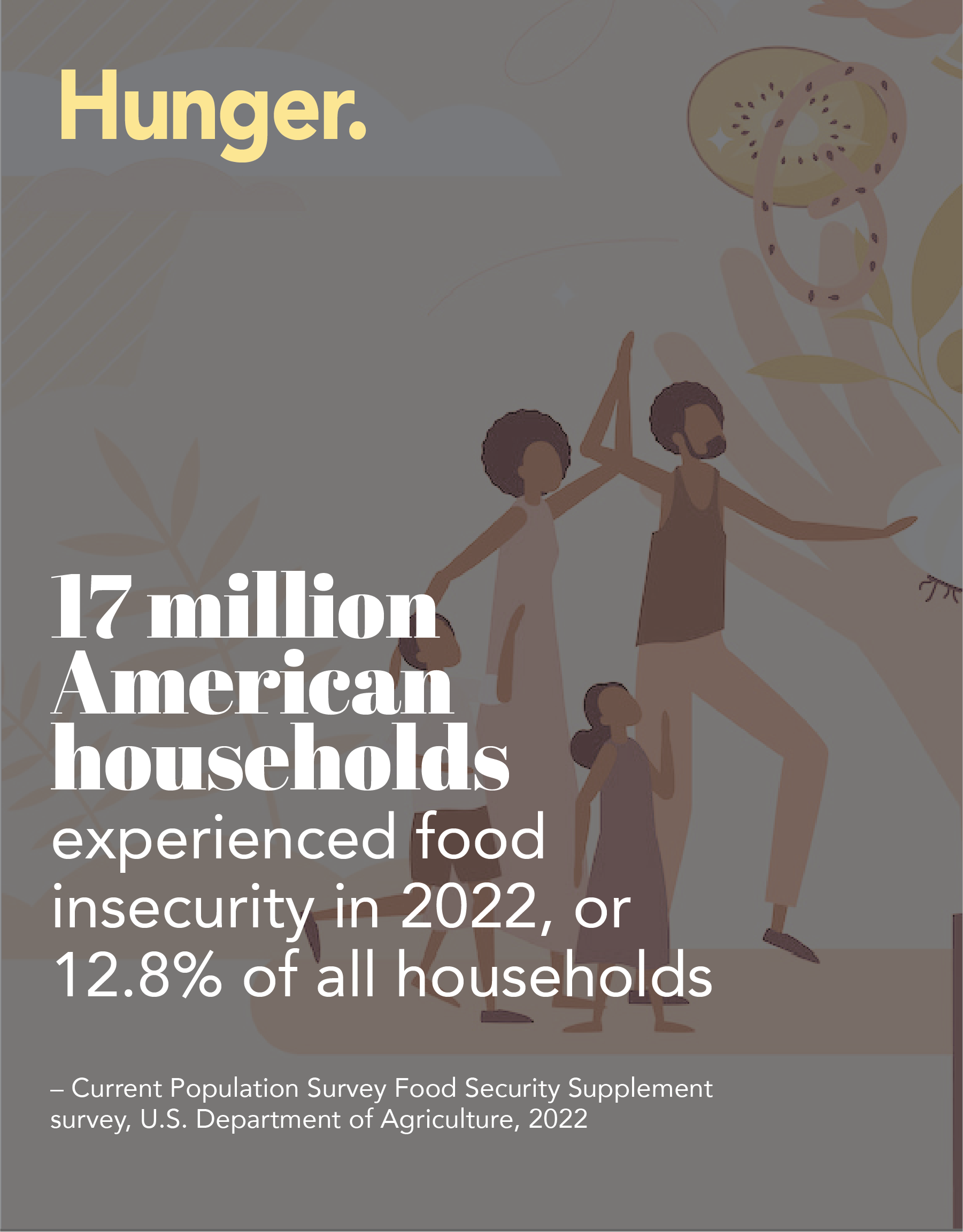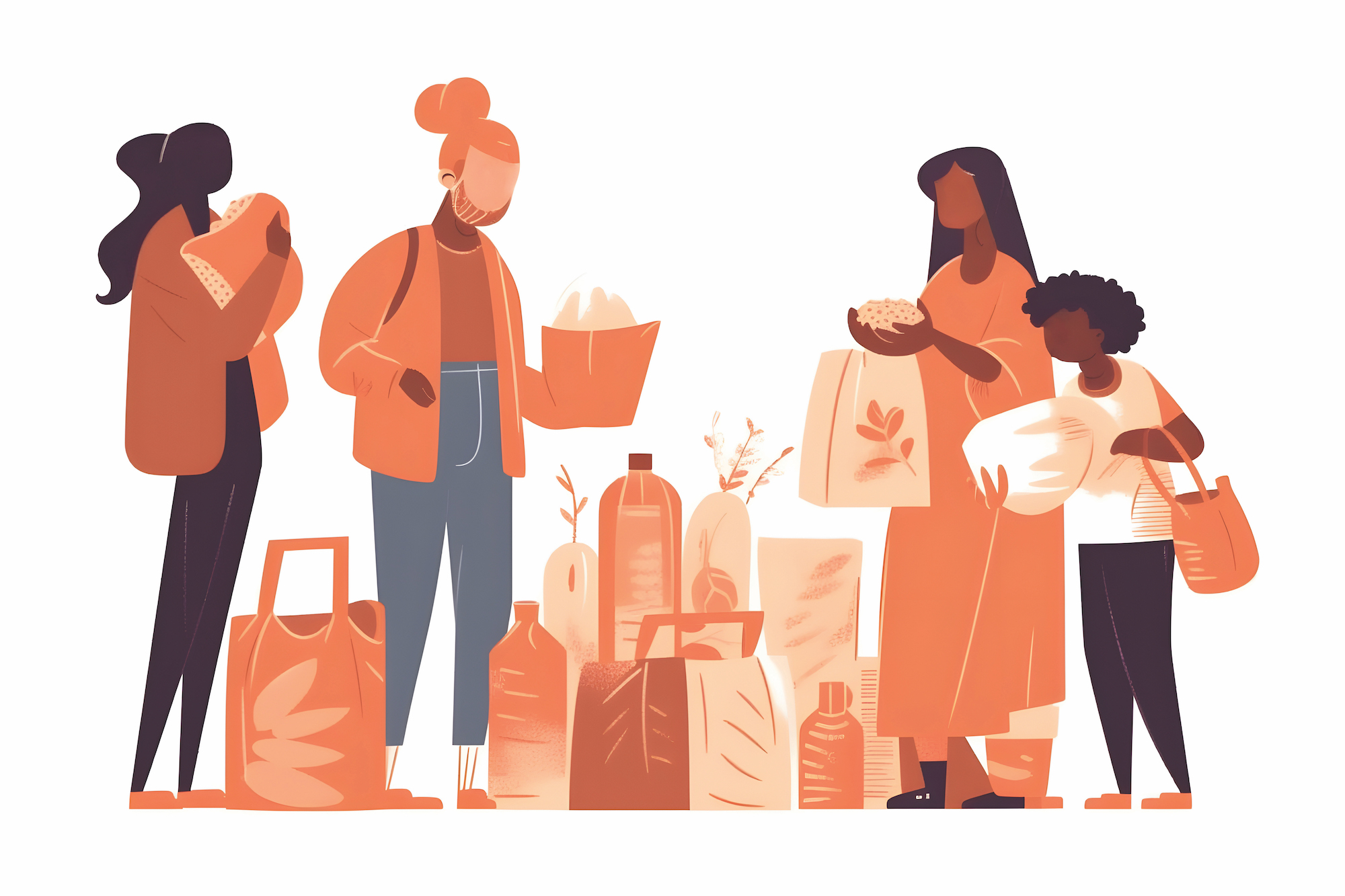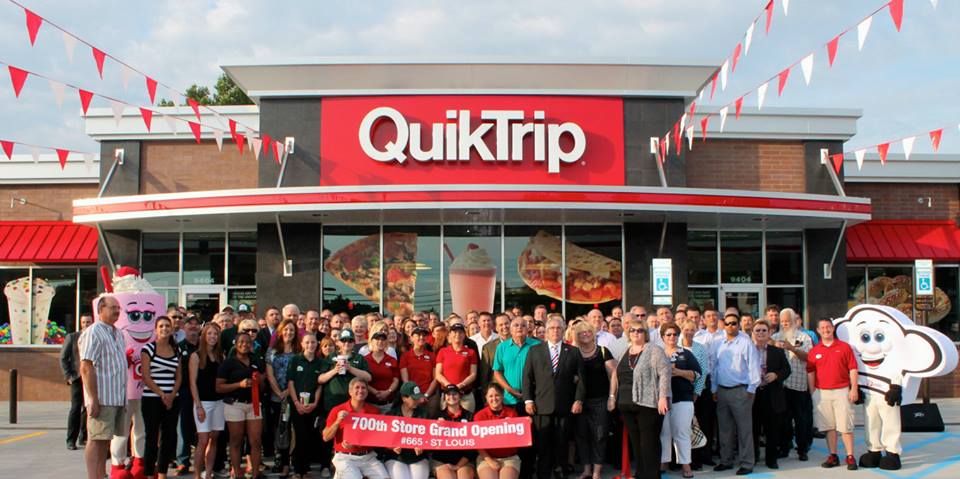
LOCAL & STATE
John Neal
Illustration Adobe Images
In an interview with The Oklahoma Eagle, Chris Bernard, president of Hunger Free Oklahoma, said food insecurity is having its sharpest increase since the 2008-2009 recession. Bernard cites several sources and reasons for the increase, including a recently released United States Department of Agriculture (USDA) report, an end to a host of federal relief programs, and continued near-record levels of food prices to support his view.
The Tulsa Area United Way has also released a report noting that 50,000 Tulsa children are suffering from food insecurity. The report said, “Oklahoma ranks first in very low food security for children. No state in the nation has a greater share of children facing extreme food insecurity than Oklahoma.” Children were the greatest beneficiaries of the temporary pandemic food assistance programs that ended. The greatest poverty decreases from these assistance programs “was among Black, non-Hispanic children,” according to the Urban Institute.
USDA also reports a sharp spike in food insecurity
The federal Department of Agriculture circulated a food security survey for 2022. The report said there was a “statistically significant” or sharp spike in food insecurity over the previous year. The survey also reveals 17 million American households experienced food insecurity in 2022, or 12.8% of all households. USDA defines food insecurity as lacking “access at all times to enough food for an active, healthy life for all household members.”

The federal government offers three primary programs to address nutrition needs: SNAP for low-income households; WIC for needy women and children; and school lunch programs. In 2022, SNAP provided 41.2 million persons $230 in weekly assistance, and WIC served 6.3 million women and children with $48 per month on average. Various national school lunch programs also served 9.6 billion meals in 2022. All these programs continued to receive supplemental but waning pandemic assistance in 2022.
As evidence of the declining contributions from pandemic assistance, Hunger Free Oklahoma found that Oklahoma School Summer Nutrition programs served 20 million meals in 2021 while providing less than a million in 2022. This is a decline of 90%, Bernard emphasized in his interview with The Oklahoma Eagle that Oklahoma was one of six states showing the most significant increase in food insecurity in 2022, as disclosed in the USDA report.
Black and poor households fared far worse in the report survey than the statistical averages for the country. Food insecure Black households were nearly twice the national average at 22.4%, with 9.25% experiencing “very low food insecurity” in 2022. These “very low” households had “more severe reduced food intake and disrupted eating patterns” due to a lack of money or other resources.
As the Tulsa Area United Way report for Tulsa, households with children have the greatest need. The USDA reports food insecurity in 2022 for Black households with children was 30%, and for those in poverty stood at approximately 40%.
Supplemental Nutritional Assistance Program also at risk
SNAP, formerly known as Food Stamps, is the most significant of the three federal programs to address nutritional needs. It has 42 million participants in 2023 and costs $92 billion, providing low-income persons with monthly benefits for “groceries for household use.”
During the pandemic, the federal government increased per person and household benefits, adjusting the SNAP formula and making emergency allotments that the Urban Institute estimates lifted millions out of poverty, at least temporarily.
Tens of thousands of households in Tulsa directly benefited from these SNAP emergency allotments. Before the pandemic in 2019, approximately 40,000 households in Tulsa County received SNAP benefits, averaging $120 monthly per person. USDA records and state reports reflect that by 2022, boosts to the program had increased participants to 50,000 households in Tulsa County, and benefits increased to $220 per person, at least $100 more per month over pre-pandemic levels.
Almost a third of SNAP participants are Black, and one in four African American families benefit from the aid. Children are 50% of the beneficiaries among the Black population. The Center on Budget and Policy Priorities estimates that the end of supplemental SNAP benefits in March 2023 caused benefits to plummet by $90 per person on average nationwide. Black families will be disproportionately and adversely affected throughout the country.
SNAP eligibility is limited by income to those earning within 130% of the federal poverty limit. Black household incomes are 60% less than that of whites in Tulsa, and the poverty level in north Tulsa is estimated to be over 30%. Consequently, many Black households in north Tulsa and elsewhere depend on SNAP benefits to fight hunger.
The USDA and other reports have shown that poor and Black Americans were disproportionately harmed by the pandemic and faced greater food insecurity. In its 2022 report, the USDA acknowledges SNAP’s failure to address the greatest need, reporting, “The prevalence of very low food insecurity among households participating in SNAP was 21.4%.”

Access to healthy food
The poor and minority communities are not constrained by food insecurity solely because of a lack of money or other resources. A host of studies and real-life inventories show supermarkets avoid areas where concentrations of people with low incomes and minorities live while convenience stores proliferate. So-called “supermarket redlining” is common, particularly in urban areas.
In their absence, convenience stores and low-priced fast-food facilities rush in to fill the void. While the average consumer spends $70 on food weekly, minority and poor individuals have much less to spend. Consequently, food-scarce individuals and households spend precious dollars frequenting businesses that lack healthy food. For example, convenience stores comprise 44% of all SNAP transactions, according to the USDA Food and Nutrition Service.
The recently released City of Tulsa Neighborhoods Conditions Index reflects that most north Tulsans reside in a “food desert.” A food desert generally means no full-service grocery store exists within one mile of their residence. Given the opportunity, SNAP participants will redeem more than 80% of their benefits in supermarkets or grocery stores, as confirmed by USDA data.
However, in 2021, the opening of the Oasis Fresh Market on North Peoria Avenue filled a huge gap in the north Tulsa food desert. It is the first grocery store in 12 years providing fresh food in north Tulsa. Tulsa City Councilor Vanessa Hall-Harper paved the way for the creation of a public-private partnership that made this possible. Oasis, which offers abundant fresh food and produce, is majority Black-owned and managed.
Bernard of Hunger Free Oklahoma referred to the Oasis store as an example of partnerships the organization has formed to fight hunger during and following the pandemic. He told The Oklahoma Eagle the Tulsa-based Hunger Free Oklahoma partners with Oasis “as a laboratory to test hunger relief concepts.”
Dark clouds ahead
Other pandemic programs have or are in the process of ending, such as the Child Tax Credit Program, some nutritional programs for schools, and the massive influx of funds to the states from the federal government. Congress has passed six major bills totaling $5.3 trillion providing assistance to businesses, schools, governments, and individuals during the pandemic.
However, food inflation was 3.7% for the 12 months ending in September 2023, following an 11.4% rise over the previous twelve months – the highest increase since 1979. Housing costs, too, are at record levels.
Bernard told The Oklahoma Eagle that we are witnessing the “steepest increase in food insecurity in recent memory.” Bernard says he is worried.










